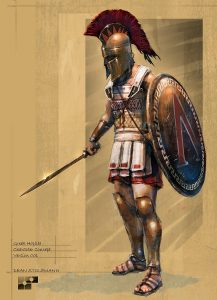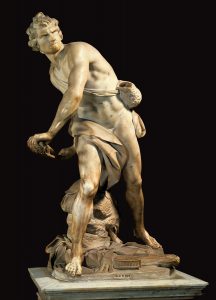After too long a hiatus I am excited to at last return to writing about Russell Gmirkin’s new book, Plato and the Creation of the Hebrew Bible.
The previous two posts:
- Plato and the Creation of the Hebrew Bible
- The Pentateuch’s Debt to Greek Laws and Constitutions — A New Look
The following post is far from what I originally intended, but I am posting it very much in the rough for the sake of getting the ball rolling again.
Comparing the stories of David
|
| David the famous warrior was also renowned as a musician and loved by many (though not by his wife, Saul’s daughter) as a dancer. In other words, David’s had the attributes of a well-rounded educated Athenian.
At age 18 Athenian males (we’re talking about the elite families) undertook an educational program that prepared them for formal citizenship by the age of 20. The three areas of the curriculum were:
- Letters — acquiring skills from the alphabet right through to reading Homer and the classics;
- Music — learning to play the lyre and training in voice and song;
- Gymnastics — a program of fitness training as well as in the use of weapons; dance was also included as a means of instilling a nimbleness necessary in battle.
Athenian festivals featured athletic and combat contests, military parades and mock battles, and dance.

|
 The David and Goliath conflict parallels the duels between Homeric heroes in the Iliad. Goliath is dressed as a Greek hoplite The David and Goliath conflict parallels the duels between Homeric heroes in the Iliad. Goliath is dressed as a Greek hoplite
- helmet,
- greaves,
- broad sword,
- long spear (sarissa)
- and shield carried by shield-bearer.
The large spear indicates knowledge of the transition from the shorter to the longer spear in the Macedonian army from around 350 BCE. David opts to fight as a more agile Greek light infantry soldier (slinger).
David – 1 Sam 16.12; 17.42 – is portrayed in terms of the Greek physical ideal: “lean, athletic male warrior, tanned from exercise in the gymnasium”. “The description of the physique of the warrior hero is mostly absent from Ancient Near Eastern literature. . .” (n. 81 p. 47)
As a figure accomplished by Greek military training, David was also a skillful
- lyre player (compare the “music therapy” David was able to provide Saul; a trope familiar in Homer and among Pythagoreans as well as in Plato’s Laws.)
- dancer
- and songwriter.
These qualities anomalous for a soldier in the Near East but consistent with a youth undergoing Greek instruction in the gymnasium.
Military tales involving David feature
- familiar aspects of Greek military training:
- target practice
- races
- mock armed contests
- a familiar Homeric literary motif:
- gift of armour as sign of friendship
|
Continue reading “David, an Ideal Greek Hero — and other Military Matters in Ancient Israel”
Like this:
Like Loading...


